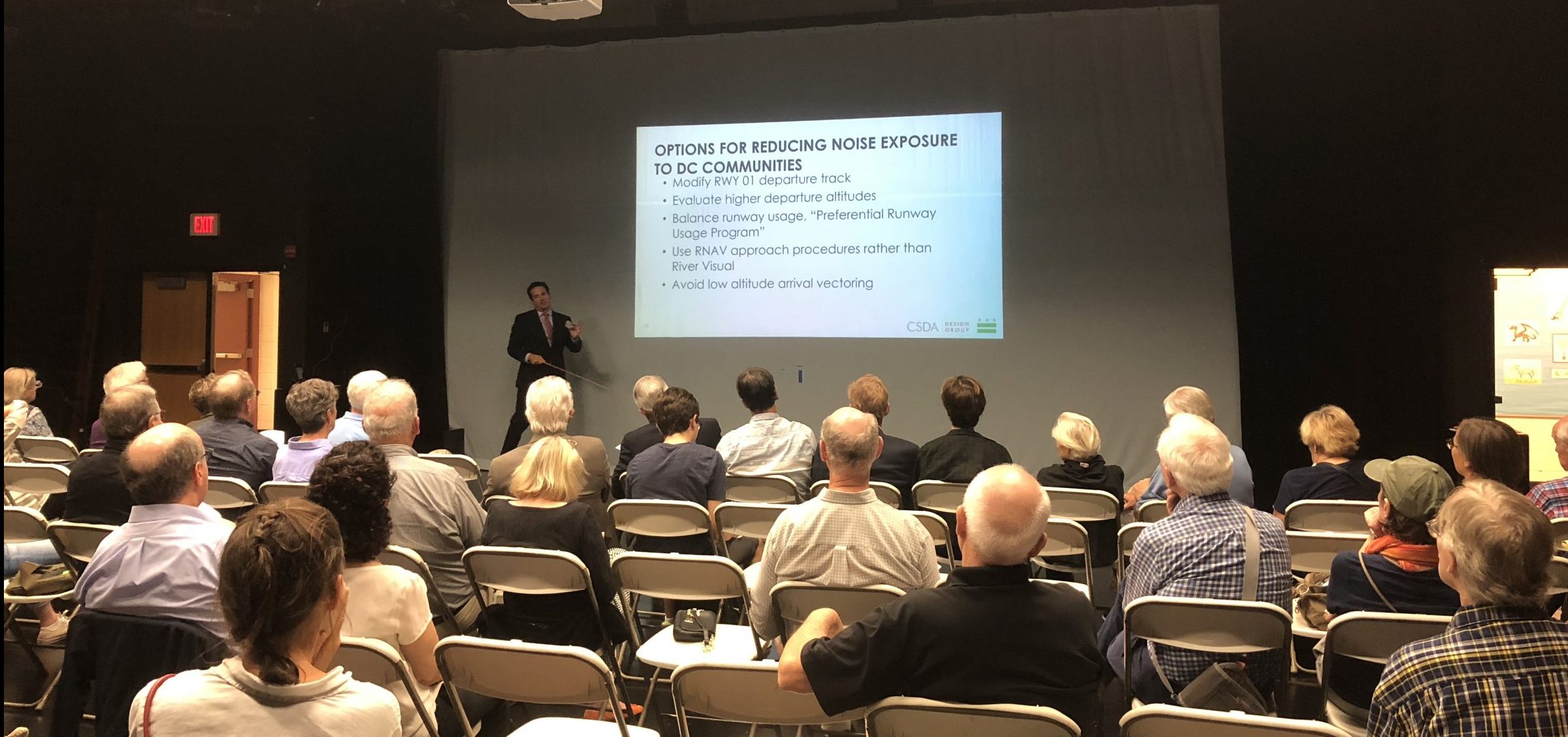Georgetown neighborhood residents met with representatives from the D.C. Department of Energy and Environment on Sept. 20 at Georgetown Day School to discuss the impacts of noise pollution originating from Ronald Reagan National Airport (DCA).
In 2017, the District awarded a grant to study noise pollution caused by flights to and from DCA to the CSDA Design Group, an architecture and engineering firm based in San Francisco. This year, Phase II of the project was authorized. According to the presentation, Phase II aims to further investigate the impact of airplane noise, as well as “identify and develop revised air traffic procedures” consistent with the Federal Aviation Administration (FAA).
Eugene Kinlow, director of the mayor’s Office of Federal and Regional Affairs, hoped to facilitate dialogue among city officials, the design group, and neighborhood residents. “My job this evening is to provide for an opportunity for the exchange of information,” Kinlow said.
The meeting, attended by about 50 people, included a presentation of the results of Phase II by Randy Waldeck, CSDA Design Group’s principal for acoustics. The event also included a question and answer session with Waldeck and representatives from the community working group on airplane noise.
Neighborhood interest in noise pollution escalated in 2015 when departure routes from DCA shifted eastward over the Potomac River, towards Georgetown. The transition from ground-based radar to NextGen, a GPS navigation system, has further narrowed flight paths over the Potomac. Waldeck explained that the shift east was intended to reduce noise pollution. But it has had the opposite effect—noise complaints from Georgetown residents along the Potomac have increased dramatically.
“The thought process, right or wrong, is ‘Well, no one lives in the river, so it’s fine,’” Waldeck said. “Obviously it’s not a very big river.”
Residents argue that the noise is not just bothersome, but detrimental to their health. According to the CSDA’s research into sleep interference, there is a 16.3 percent chance that residents will be woken up by airplane noise on any given night. Marcio Duffles, Georgetown resident and representative of the neighborhood’s working group aiming to reduce DCA noise pollution, spoke on the flight paths’ impact on the neighborhood. “There’s a real impact here,” he said. “I got two emails this week from people who just moved because of the noise.”
Of particular concern to area schools, including Georgetown, is noise pollution’s potential to disrupt learning. In an email to the Voice, Chris Murphy, vice president for government relations and community engagement, summarized the university’s view. “The University remains deeply concerned about the increased levels and frequency of airplane noise on campus,” Murphy wrote.
Both the university and community groups have urged the FAA to move the flight paths to their original routes, but Waldeck stressed the agency’s reluctance to do so. “The FAA generally will not let you do things that disincentivize or cost money or prohibit things based on noise alone,” he said. “They consider it impacting interstate commerce.” The design group also proposed higher departure altitudes and revisions to the FAA’s nighttime flight program, as well as further research.
Little substantive action to reduce noise pollution has been taken, in part because Maryland currently has a pending lawsuit with the FAA regarding the flight path changes. Another lawsuit, from the university and neighborhood groups, was struck down by a federal appeals court in March, having been filed too late.
With regard to residents’ frustration about the lack of progress, Waldeck shrugged. “Someone’s always annoyed, frankly.”





